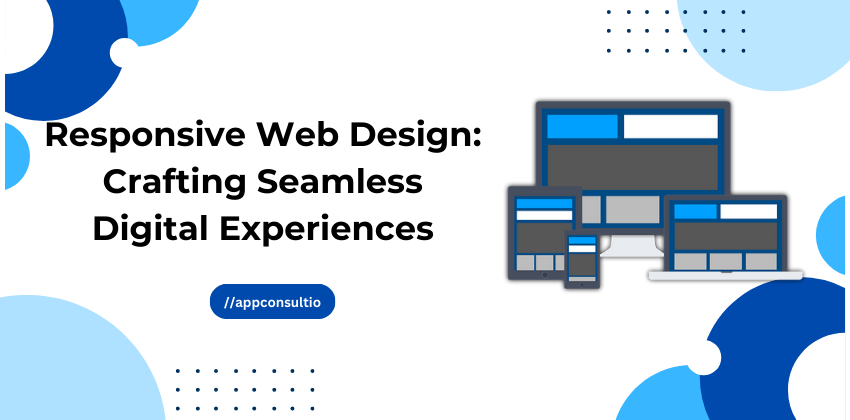
In the ever-evolving landscape of the World Wide Web, the art of web design has undergone remarkable transformations, continuously adapting to the changing demands and technological advancements. As we journey through the evolution of website characteristics and design processes, we arrive at the pinnacle of contemporary design philosophy - responsive web design.The origins of web design can be traced back to a pivotal moment in 1993 when NCSA Mosaic version 1.0 brought forth the ability to seamlessly blend images and text within a digital space. These first-generation websites, marked by straightforward presentations of information, relied on limited color palettes and simple layouts. However, these rudimentary designs lacked the interactive elements that define the digital experiences we enjoy today.
The evolution of HTML, particularly through Netscape's extensions in 1995, ushered in a new era of innovation in web design. The transition from monochromatic backgrounds to vibrant imagery allowed for more purposeful organization of content, fostering meaningful interactions between users and the web interface. Illustrative metaphors replaced plain descriptive texts, enhancing user understanding and experience.Yet, HTML's capabilities alone fell short of satisfying the growing desire for expressive and controlled web document layouts. In response, web developers turned to non-semantic HTML, a practice not without its limitations. Here, Cascading Style Sheets (CSS) emerged as a transformative force, providing designers and developers with the means to propel the World Wide Web to new heights.CSS empowered the alteration of font sizes, color palettes, and background images, revolutionizing the visual appeal of web documents.
The mobile market is undergoing a profound transformation, marked by an explosion of choices and rapid advancements in hardware. In 2015, a remarkable 7.9 billion mobile devices, predominantly smartphones, underscored this shift. Smartphone usage surged by half a billion in a year, a testament to this remarkable growth. Responding to this upheaval, Luke Wroblewski introduced a "mobile first" design. This groundbreaking approach prioritizes mobile experiences as foundational in web design, reshaping its core. This visionary stance embraces the surge in handheld devices, fundamentally changing the landscape of web design. Mobile First thrives on understanding user and business needs. This guides the selection and prioritization of key features on web pages. Within a mobile's limits, a meticulous distillation process trims away non-essentials. This curated core, defined from the start, ensures a consistent user experience across diverse devices and platforms.
2)Relative Units
In Responsive Web Design, the flexibility of web elements across diverse devices is achieved by using relative units instead of fixed values in CSS. While pixels (px) have been popular, their static nature isn't practical for modern web experiences. Relative units like percentage (%) and em/rem adapt gracefully to varying screen sizes. For instance, employing a percentage for column widths ensures consistent proportions, regardless of the viewing device. Em and rem units further maintain proportional harmony, with rem dynamically calculated based on root font-size. This approach ensures responsive elements that elegantly adjust to the screen dimensions, enhancing the user experience.
3)Media Queries
Media Queries are a cornerstone of Responsive Web Design, enabling tailored styles based on device characteristics. Initially introduced as media types, they've evolved to be more versatile. By employing media queries, designers can create distinct breakpoints for different screen sizes. These breakpoints ensure content integrity across devices. This strategic adaptation can be coupled with the "mobile first" approach, where default styles target mobile scenarios, and media queries refine layouts as resolution increases. This dynamic interplay empowers developers to optimize responsiveness, delivering seamless experiences to users across a wide array of devices.
4)Flexible Images
A common challenge with images lies in maintaining proper dimensions within their containers. To address this, setting the maximum width of images to 100% is a foundational practice, preserving their proportions as containers adjust. This prevents images from exceeding their intended sizes while fluidly adapting to changing browser dimensions. This principle extends to rich media and videos, ensuring consistent rendering. CSS provides additional properties for creating flexible background images, allowing native resolution display constrained by container dimensions. Techniques like combining fixed and auto values or using relative units like percentages enable proportional scaling, while the "cover" value guarantees full and proportional display within containers. By employing these strategies, web designers achieve fluid and harmonious visual experiences across responsive interfaces.